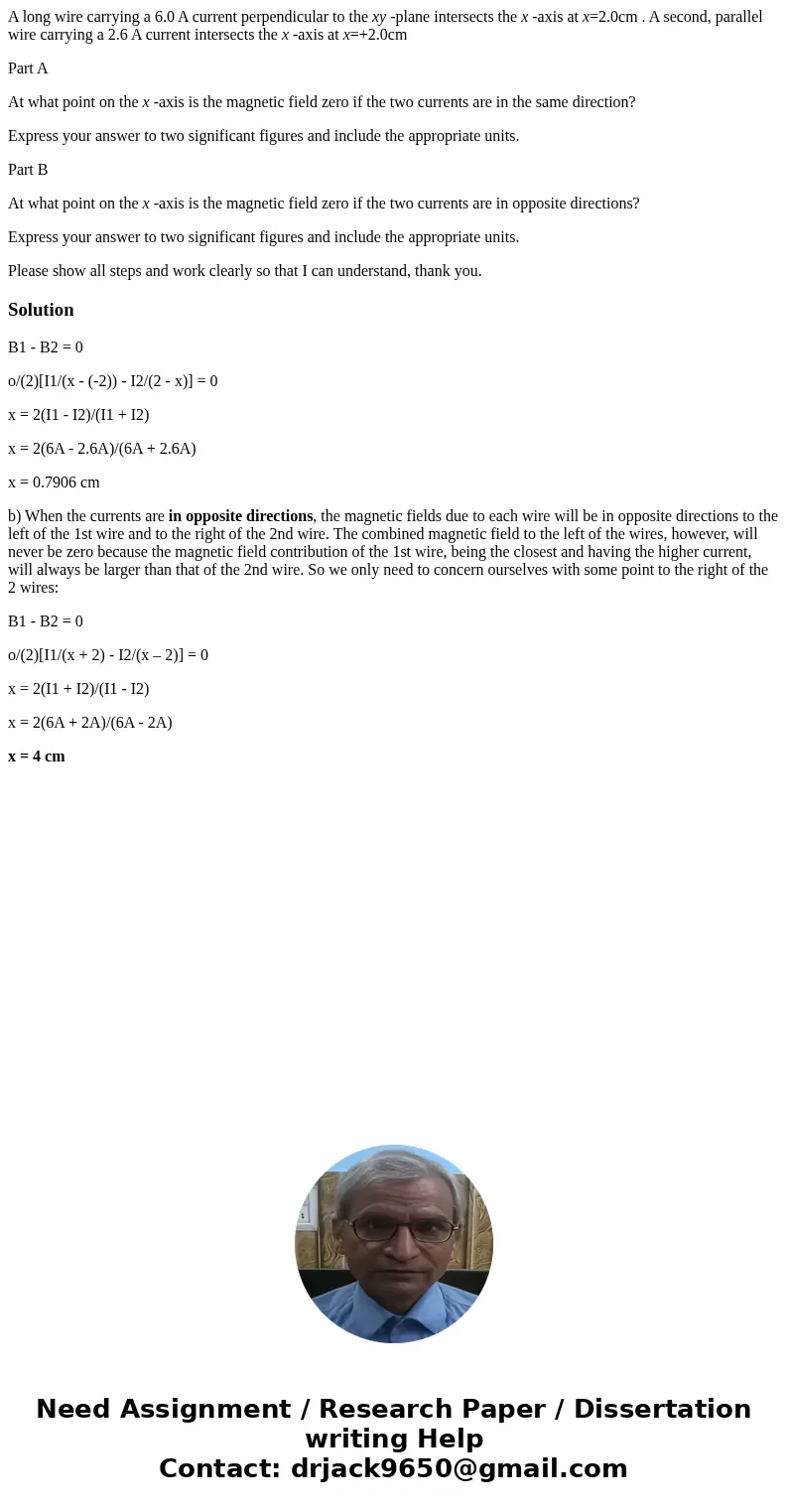A long wire carrying a 60 A current perpendicular to the xy
A long wire carrying a 6.0 A current perpendicular to the xy -plane intersects the x -axis at x=2.0cm . A second, parallel wire carrying a 2.6 A current intersects the x -axis at x=+2.0cm
Part A
At what point on the x -axis is the magnetic field zero if the two currents are in the same direction?
Express your answer to two significant figures and include the appropriate units.
Part B
At what point on the x -axis is the magnetic field zero if the two currents are in opposite directions?
Express your answer to two significant figures and include the appropriate units.
Please show all steps and work clearly so that I can understand, thank you.
Solution
B1 - B2 = 0
o/(2)[I1/(x - (-2)) - I2/(2 - x)] = 0
x = 2(I1 - I2)/(I1 + I2)
x = 2(6A - 2.6A)/(6A + 2.6A)
x = 0.7906 cm
b) When the currents are in opposite directions, the magnetic fields due to each wire will be in opposite directions to the left of the 1st wire and to the right of the 2nd wire. The combined magnetic field to the left of the wires, however, will never be zero because the magnetic field contribution of the 1st wire, being the closest and having the higher current, will always be larger than that of the 2nd wire. So we only need to concern ourselves with some point to the right of the 2 wires:
B1 - B2 = 0
o/(2)[I1/(x + 2) - I2/(x – 2)] = 0
x = 2(I1 + I2)/(I1 - I2)
x = 2(6A + 2A)/(6A - 2A)
x = 4 cm

 Homework Sourse
Homework Sourse